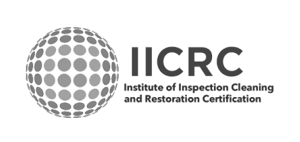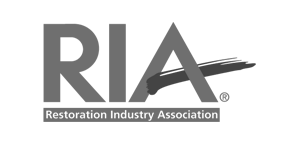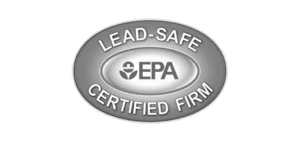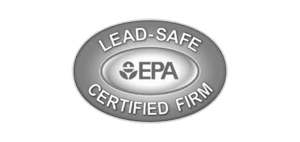Are you noticing unsightly spots, specks, or clusters appearing on your walls, floors, or ceilings? If so, it’s highly likely that you are dealing with a household mold infestation. Mold, a type of fungus that thrives in humid and moist environments, can cause structural damage to your property and pose significant health risks to you and your loved ones.
Did you know that over 10,000 species of mold exist worldwide? However, several varieties are more common in households than others. What is the most common type of mold? In this article, we will explore the most prevalent types of household molds that you should be on the lookout for and provide insights into their characteristics, habitats, and health implications. By understanding these molds and their remediation, you can create a safer and healthier living environment for you and your family.
Key Takeaways
- Household mold infestations can cause structural damage to your property and significant health risks to you and your loved ones.
- Over 10,000 species of mold exist worldwide, and several varieties are more common in households than others.
Understanding Mold and Its Impact on Homes
If you’ve ever had to deal with mold in your home, you know how difficult and frustrating it can be to get rid of. But before you can effectively address a mold issue, it’s essential to understand what mold is and how it can impact your living environment.
Mold is a type of fungus that thrives in damp and humid conditions. It spreads through tiny spores that can travel through the air and settle on surfaces, where they can grow and multiply rapidly. Common indoor mold species include Cladosporium, Penicillium, Aspergillus, and Stachybotrys (also known as black mold).
| Mold Characteristics | Mold Impact on Homes |
|---|---|
| Mold thrives in damp and humid conditions | Mold can cause structural damage to homes |
| Mold spreads through tiny spores that can travel through the air and settle on surfaces | Mold can cause unsightly stains and odors |
| Common indoor mold species include Cladosporium, Penicillium, Aspergillus, and Stachybotrys | Mold can trigger allergic reactions and respiratory issues in people and pets |
Left unchecked, mold can cause serious structural damage to your home, as well as unsightly stains and unpleasant odors. Mold can also trigger allergic reactions and respiratory issues in people and pets, making it essential to address mold issues promptly and thoroughly.
Mold can be a significant health hazard and a threat to the structural integrity of your home. By understanding what mold is and how it spreads, you can take steps to prevent and manage mold issues in your living environment.
Cladosporium: The Most Prevalent Mold in Homes
Cladosporium mold is the most common type of mold found in households. It thrives on damp surfaces and is often found in bathrooms, kitchens, and basements.
Cladosporium mold is typically olive-green or brown in color and has a powdery texture. It spreads quickly, and its spores can cause health problems such as respiratory issues, headaches, and allergies.
To identify Cladosporium mold in your home, look for damp spots, musty odors, and visible mold growth. You can also hire a professional mold inspector to determine the extent of the infestation.
To eradicate Cladosporium mold, it’s crucial to address the underlying moisture issue and fix any leaks or water damage. Use a mold removal solution and protective gear to clean affected areas, such as tile grout and shower curtains. If the infestation is severe, seek professional assistance.
Penicillium: A Common Contaminant in Indoor Spaces
Penicillium is a widespread household mold that thrives in damp and poorly ventilated areas. This type of mold can appear as fuzzy green, blue, or white spots and can be found on decaying organic matter, such as food, fabrics, and paper products like cardboard.
The genus Penicillium has over 200 known species, some of which are used in the production of antibiotics and fermented foods. However, certain Penicillium strains can also cause allergic reactions, respiratory problems, and other health issues when inhaled.
Penicillium mold can enter your home via various avenues, including ventilation systems, air conditioning, damp building materials, and contaminated food. Once inside, the spores can spread rapidly and colonize new areas, making it challenging to get rid of them completely.
To prevent and eliminate Penicillium mold, you should address water leaks and moisture issues promptly, fix any structural damages, and maintain good ventilation in your home. If you suspect a Penicillium infestation, contact a professional mold remediation company to assess the extent of the problem and carry out safe and effective mold removal.
Alternaria: Common Allergenic Mold
If you suffer from allergies, Alternaria mold can be a significant trigger for you. This mold type commonly grows on damp surfaces and can thrive both indoors and outdoors. Often found in bathrooms, kitchens, and basements, Alternaria spores can spread easily and affect the air quality in your home.
The appearance of Alternaria can vary from species to species, but most have a velvet-like texture and are usually dark green or brown in color. In some cases, Alternaria can also appear as a black mold.
When left untreated, Alternaria mold can cause respiratory problems, skin irritation, and other health issues. It is crucial to detect and remediate Alternaria promptly by addressing moisture issues and properly cleaning and disinfecting affected surfaces.
| Tip | Description |
|---|---|
| Inspect damp areas regularly | Keep an eye on areas that are often moist, like bathrooms and kitchens, for the presence of mold. |
| Use a dehumidifier | Reduce moisture levels in your home, making it less habitable for mold growth. |
| Clean up spills quickly | Wipe up any water spills within 24-48 hours to prevent moisture from setting in and mold from growing. |
| Use mold-killing products | When cleaning mold-affected surfaces, use fungicidal cleaners that specifically target Alternaria mold. |
| Hire a professional | If you suspect mold contamination in your home, consider hiring a professional mold remediation company to assess and address the issue. |
Aspergillus: A Widespread Indoor Mold
Aspergillus is one of the most prevalent types of indoor mold, commonly found in various household environments. This genus of molds comprises over 185 species and is naturally present in soil, decaying organic matter, and plant debris.
When it comes to indoor environments, Aspergillus typically thrives in damp areas such as bathrooms, kitchens, and basements. It can also grow on various surfaces, including walls, carpets, and upholstery. Aspergillus produces spores, which can easily spread through the air and trigger respiratory issues, particularly in people with weakened immune systems. Exposure to Aspergillus can cause a wide range of health problems, including allergies, sinusitis, and lung infections.
To address Aspergillus contamination in your home, it’s essential to identify the source of moisture and eliminate it promptly. You can also prevent Aspergillus growth by maintaining adequate ventilation and keeping indoor humidity levels below 50%. If you suspect significant Aspergillus infestations, it’s advisable to seek expert help from certified mold remediation professionals.
Stachybotrys: Notorious Black Mold
Stachybotrys, commonly known as black mold, is a toxic species that can produce harmful mycotoxins. You can detect Stachybotrys mold by its greenish-black color and slimy texture. Black mold typically thrives in high moisture environments with a relative humidity of over 55% and can grow on a variety of surfaces, including drywall, wood, carpet, and insulation.
Exposure to Stachybotrys mold can trigger health problems such as respiratory symptoms, headaches, and skin irritation. Furthermore, prolonged exposure to black mold may lead to more severe health issues such as memory loss and chronic fatigue syndrome.
If you suspect a Stachybotrys mold infestation in your home, it’s best to call a professional mold removal service for expert remediation. Attempting to remove black mold on your own can be dangerous, as it may release spores and other particles into the air and cause further contamination.
| Type of Mold | Stachybotrys |
|---|---|
| Appearance | Greenish-black color; slimy texture |
| Preferred Habitat | High moisture environments with a relative humidity of over 55% |
| Health Risks | Respiratory symptoms, headaches, skin irritation, memory loss, chronic fatigue syndrome |
| How to Remove | Call a professional mold removal service |
Aureobasidium: Frequently Found on Wooden Surfaces
If you notice a black, pink, or brown mold growing on your wooden window frames, furniture, or other wooden surfaces, there is a high probability that it is Aureobasidium, a common mold in households. This mold is notorious for its rapid growth patterns, and if left unchecked, it can spread to other areas of your home.
Aureobasidium mold poses potential health effects, including skin and eye irritation and respiratory problems. Therefore, it’s critical to address any Aureobasidium contamination promptly.
You can prevent the growth of Aureobasidium mold by keeping your home’s humidity levels low and maintaining proper ventilation. You should also routinely inspect and clean your wooden surfaces with a solution of water and detergent to hinder the growth of the mold.
| Characteristics of Aureobasidium Mold | Habitat of Aureobasidium Mold | Health Implications of Aureobasidium Mold |
|---|---|---|
| Aureobasidium mold is a black or brown mold that produces pinkish spores. | Aureobasidium mold thrives on wooden surfaces, such as window frames, furniture, and floors. | Aureobasidium mold can cause skin and eye irritation, respiratory problems, and allergic reactions. |
If you suspect Aureobasidium mold contamination in your home, call a professional mold remediation service to remove the mold safely and prevent its regrowth.
Trichoderma: Mold Associated with Water-Damaged Homes
Trichoderma is a mold commonly found in water-damaged homes and damp environments. This type of mold is a hazard to your health and can cause problems such as respiratory issues and infections. Identifying Trichoderma mold can be challenging since it often appears in various colors such as green, white, and yellow, and looks similar to other types of mold. However, Trichoderma is characterized by its cotton-like texture and can grow on a range of surfaces, including carpets, wallpaper, and wood.
To effectively eliminate Trichoderma, you need to fix the underlying moisture problem that is causing its growth in your home. After resolving the moisture issue, you should remove the affected materials and eliminate all visible mold spores using appropriate products such as bleach or hydrogen peroxide. However, keep in mind that Trichoderma releases spores into the air, which can spread and contaminate other areas of your home. Therefore, it’s crucial to wear protective gear such as gloves and masks and prevent cross-contamination by sealing off the affected area during the remediation process.
Bear in mind that Trichoderma can reappear if the underlying moisture issue is left unresolved. So, it’s essential to take measures to prevent its growth, such as promptly repairing any water leaks or spills, using ventilation systems, and maintaining optimal humidity levels in your home. Regular inspections and cleaning can help detect and address Trichoderma growth before it becomes a severe problem.
Fusarium: Mold Associated with Water Intrusions
When water intrudes into your home, it creates an environment that is conducive to mold growth. One of the most common molds that thrive in such conditions is Fusarium.
Fusarium mold has a distinctive appearance, often presenting as a white or pinkish growth. It’s commonly found in damp areas such as basements, bathrooms, and kitchens. Exposure to Fusarium mold can lead to a range of health issues, including respiratory problems and allergic reactions.
If you suspect that your home has a Fusarium mold infestation, it’s essential to act quickly. The longer you wait, the more extensive the damage can become. The first step is to identify the source of moisture and address it promptly. Once you have fixed the underlying issue, you can focus on removing the mold.
There are several effective strategies for removing Fusarium mold, including using commercially available mold removal products or hiring a professional mold remediation service. It’s crucial to follow proper safety measures and wear protective equipment to prevent exposure during the cleaning process.
Remember, preventing mold growth is the most effective way to manage it. Keep your home dry and well-ventilated, address any leaks or water intrusions immediately, and maintain a clean living environment. By taking these steps, you can ensure a healthy and mold-free home for you and your family.
Preventing and Managing Common Household Mold
Preventing mold growth starts with controlling moisture. Fix any leaks, dry water-damaged areas, and maintain adequate ventilation in bathrooms, kitchens, and laundry rooms. Use air conditioners and dehumidifiers in humid climates to keep indoor humidity levels below 60%. Regular cleaning of surfaces and items in damp areas is also necessary to prevent mold growth.
If mold is already present in your home, it’s crucial to act promptly to stop its spread. Wear protective gear such as gloves and masks when cleaning up mold, and avoid disturbing the mold to prevent the spread of spores. Small areas of mold can be cleaned using a solution of detergent and water or a specialized mold cleaner, while larger or severe infestations may require professional remediation.
Once the mold is removed, it’s essential to address the cause of the moisture to prevent future growth. Regular inspection of potential mold-prone areas and prompt action to address any signs of moisture or water intrusion is key to managing household mold effectively.
Here are some additional tips for preventing and managing common household mold:
- Use mold-resistant paints and building materials in your home.
- Regularly clean and maintain air ducts.
- Keep indoor humidity levels below 60% to prevent mold growth.
- Ensure proper drainage and ventilation in bathrooms, kitchens, and laundry rooms.
- Don’t carpet bathrooms, kitchens, or basements.
By taking proactive measures to prevent and address mold growth in your home, you can protect your health and property from the harmful effects of mold infestations.
Conclusion
Now that you have learned about the most common types of household mold and their potential health risks, you can take proactive steps to ensure a safe and mold-free living environment. Remember to inspect your home regularly for any signs of mold growth, address moisture issues promptly, and seek professional assistance if needed. By following these guidelines, you can protect your home and family from the hazards of mold contamination.
FAQ
How do I identify common household mold types in my home?
Common household mold types can be identified by their appearance, texture, and color. Consulting with a professional mold inspector can also help identify specific mold species.
Are all types of household mold harmful to my health?
While some types of household mold are relatively harmless, others can pose health risks, especially to individuals with allergies or respiratory conditions. It is essential to address mold issues promptly to minimize potential health effects.
Can I remove household mold myself, or do I need professional assistance?
The severity of the mold infestation and the type of mold present will determine whether you can handle mold removal yourself or if professional assistance is necessary. In some cases, it is safer and more effective to hire a certified mold remediation specialist.
What are the common causes of household mold growth?
Household mold often grows in areas with excessive moisture, such as bathrooms, kitchens, and basements. Poor ventilation, leaks, and water damage can contribute to mold growth.
How can I prevent the growth of common household mold?
To prevent mold growth, it is crucial to control moisture levels in your home. This includes fixing leaks, improving ventilation, using dehumidifiers, and promptly addressing water damage.
What are the potential health effects of exposure to mold?
Exposure to mold can cause allergic reactions, respiratory issues, skin irritation, and other health problems. Individuals with weakened immune systems or pre-existing health conditions may be more susceptible to the adverse effects of mold.
How can I effectively clean and remove mold from surfaces?
The recommended method for cleaning and removing mold depends on the surface and severity of the infestation. In general, using a mixture of water and detergent can help clean mold from non-porous surfaces. For porous materials or extensive mold growth, seek professional assistance.
Can household mold come back after it has been removed?
If the underlying moisture issue that caused the mold growth is not addressed, mold can return even after it has been removed. It is crucial to address the root cause of mold growth to prevent recurrence.
How can I improve the indoor air quality in my home to minimize mold growth?
Improving indoor air quality involves maintaining proper ventilation, controlling humidity levels, regularly cleaning and dusting, and using air purifiers or filters. These practices can help reduce the conditions favorable for mold growth.
What steps should I take if I discover mold in my home?
If you discover mold in your home, it is essential to address the underlying moisture issue and take appropriate remediation measures. This may include cleaning the surface, removing affected materials, and consulting with a professional mold remediation specialist if needed.










